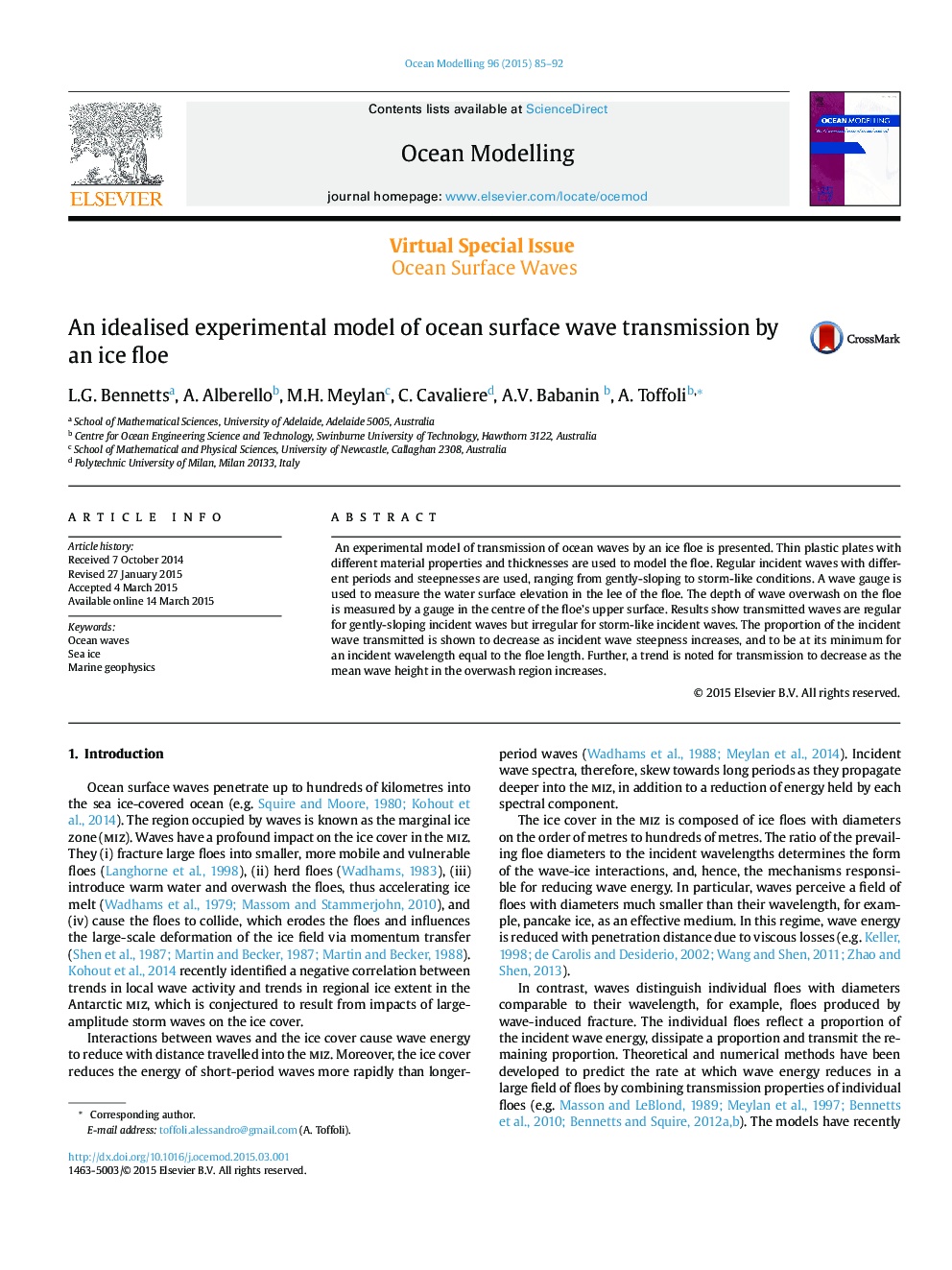| Article ID | Journal | Published Year | Pages | File Type |
|---|---|---|---|---|
| 4551998 | Ocean Modelling | 2015 | 8 Pages |
•Novel experimental model used to predict ocean surface wave transmission by a sea ice floe.•Wave overwash of the floe measured by a wave gauge.•Results show transmission affected by nonlinear mechanisms.•Transmission shown to decrease as incidents wave steepness increases.•Decreasing transmission shown to be correlated to increasing wave heights in overwash region.
An experimental model of transmission of ocean waves by an ice floe is presented. Thin plastic plates with different material properties and thicknesses are used to model the floe. Regular incident waves with different periods and steepnesses are used, ranging from gently-sloping to storm-like conditions. A wave gauge is used to measure the water surface elevation in the lee of the floe. The depth of wave overwash on the floe is measured by a gauge in the centre of the floe’s upper surface. Results show transmitted waves are regular for gently-sloping incident waves but irregular for storm-like incident waves. The proportion of the incident wave transmitted is shown to decrease as incident wave steepness increases, and to be at its minimum for an incident wavelength equal to the floe length. Further, a trend is noted for transmission to decrease as the mean wave height in the overwash region increases.
